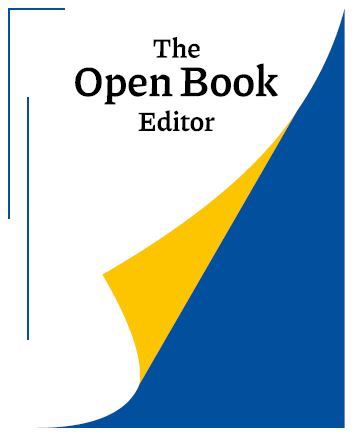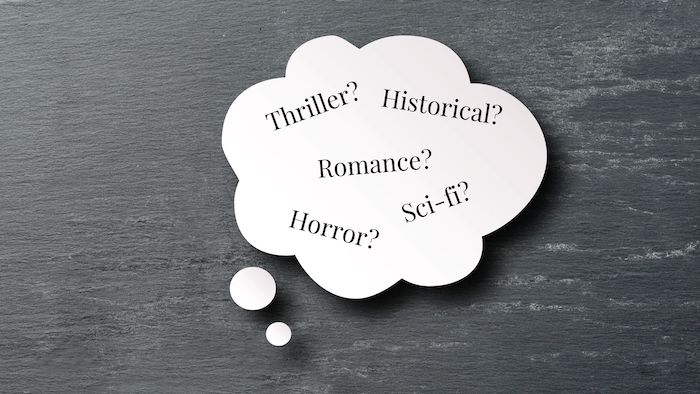While it can be natural to feel that what you’re writing is so unique it defies labels, the reality is that you need to have a firm grasp on your book’s genre to know what you’re selling—whether it’s to agents, publishers, or readers. Read on to understand more about why classifying your work is so important, and how you can figure out your book’s genre.
Why do genres exist?
Genres are there to help readers find books they will love. You’ve probably finished a great book before and wanted to read something similar, right? Finding others that fall under the same genre is the easiest way to ensure you’ll enjoy your next read.
That being said, there are a lot of genres and sub-genres out there, which can make determining the right one for your book intimidating and confusing. It can be tempting to throw a vague label on your book and hope for the best, or tack on too many sub-genres with the hope of reaching a wider audience.
However, there are good reasons to avoid this!
Why it’s important to know your book’s genre

Increase your chances of landing an agent or publisher
Whichever type of publication you are planning to pursue to see your book in print, it’s important to know the genre of your book before you start querying or pitching. One of the first things agents and publishers want to know is your book’s genre. It sets expectations and places them in the right frame of mind to understand your story.
It’s also important to remember that many agents and publishers specialise in specific genres. It’s necessary to know your book’s genre, so they can make an informed decision about whether they are the right agent or publisher to sell it.
Find the best support
Beta readers and critique partners are a big part of the writing process, especially when it comes time to edit your book. Whether you’re writing fiction or non-fiction, you’ll want to find people experienced in the same genre, as they are best placed to critique your work.
So, if you’ve written a supernatural horror book, don’t hand it over to a beta reader writing a biography, autobiography, or memoir—they won’t be able to understand the nuances of your genre in the same way as someone who also writes supernatural fiction.
Focus your marketing & set expectations
All writers dream of selling thousands upon thousands of copies of their books. But this will be difficult to achieve if you don’t have a clear idea of your book’s genre. To market it effectively, you need to know what you’re selling to readers.
This rings particularly true when you self-publish.
In self-publishing, you are in charge of every aspect of your book. You’ll need to know which category your book falls under just to be able to even publish it. The genre also affects how your book looks, and, by that, we mean the cover. People do judge books by their covers, and if you have the wrong cover art (e.g., a couple embracing on the cover of a thriller), you could end up confusing your audience and putting them off your book.
How to figure out your book’s genre

Consider the main genres
The great thing about genres is that the major ones rarely differ in definition across the board. Below are a few of the main genres you should know about:
- Literary = fiction set in the real world; character-driven and tackles serious issues.
- Romance = fiction with romance as the central point of drama moving the story forward.
- Horror = fiction with the aim of creating a sense of fear or dread in the reader.
- Thriller = fast-paced fiction where life-or-death stakes.
- Speculative = fiction with fantastical elements, including science-fiction (with non-existent technology or a story set in a future time period), fantasy (a fictional world with strange creatures and/or magic), and alternative history (an original take on world history based on some major event of the past turning out differently).
- Historical = fiction set at some point in the past (often at least 50 years); may include real-life historical figures.
Find similar books
A simple step to determine your book’s genre is to choose 5-10 books you’ve read which have themes similar to yours. Now, stop and ask yourself: would someone who enjoyed reading one of these books enjoy reading mine? If the answer is yes, take a look at what label those books have in common and voila; you’ve most likely figured out your genre, as well.
This can also be an excellent way to source comp (comparison) titles for your query letter. Adding a comp title or two to the end of your pitch can help agents and publishing houses better understand the content and style of your book, as well as which audiences are most likely to want to read it.
Combine two genres to form your book’s genre
If you’re struggling to decide between two different categories, or can’t decide on an exact fit for your book, don’t stress. Remember, you are allowed to combine genres! A few examples of combined genre novels include paranormal thrillers, historical romance, and psychological suspense.
While combining genres can help give people an idea of what your book is about before they open it, remember that two is the golden number here. Avoid combining more than two genres or sub-genres; instead of offering clarity, too many genre labels will confuse potential readers.
Consider the age of your target reader
If your book is aimed at a certain age group, this can serve as an added tool to help you choose the right genre. For instance, many modern books marketed at the 20-years-and-under group tend to come with identifying age labels: MG = Middle Grade (8-12 years), YA = Young Adult (12-18 years), and NA = New Adult (18+ years).
If your book falls under one of these age categories, you can simply tack the appropriate label on to your book’s genre or sub-genre: e.g., YA paranormal horror. Take note that if your book is aimed at an adult audience, there’s no need to include an age-identifying label.
Still not sure about your book’s genre?
If you’ve considered the above tips but still don’t feel confident you have the right genre for your book, contact us at The Open Book Editor to find out more about our author services. We can help you identify the main themes and style of your book—which are the primary ways one determines genre—to ensure it ends up in the hands of the right eager readers!



I have accumulated about 25 memoirs of people who lived in Panama between 1916 – 2000. Some stories seem historical while others seem anthropological. What genre would this fall under?
Hi Carlos. Books with multiple genre crossovers will always be up for debate, but you could appropriately list such a book in both the genres of “Memoir” and “Short Stories”. It would be worth making it clear the range of stories the reader is going to encounter with an appropriate subtitle on the cover, such as “[Book Title]: An Anthology of Memoirs and Short Stories” or “[Book Title]: A Collection of Memoirs and Short Stories”. I hope this helps!